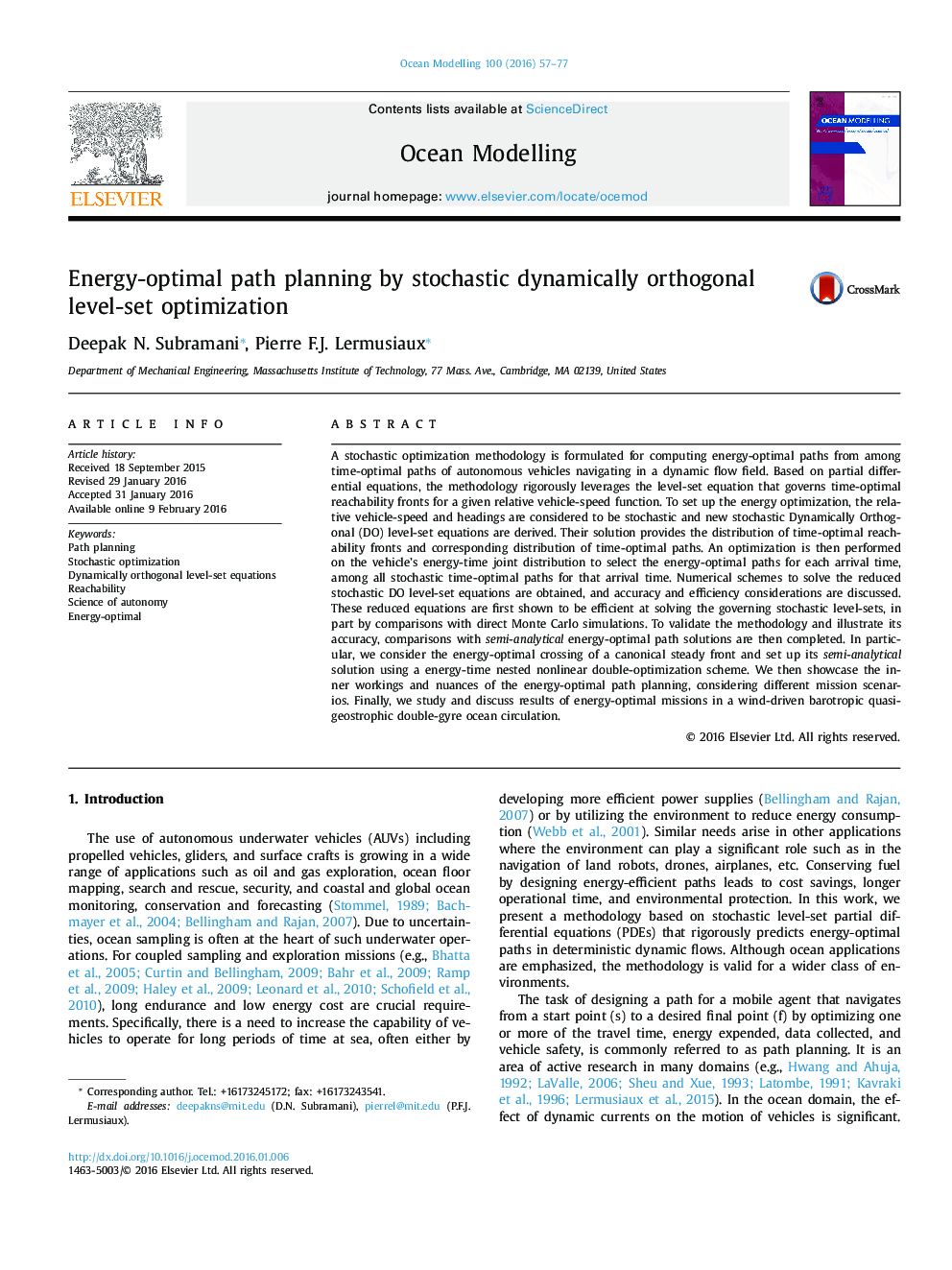| کد مقاله | کد نشریه | سال انتشار | مقاله انگلیسی | نسخه تمام متن |
|---|---|---|---|---|
| 6388003 | 1627749 | 2016 | 21 صفحه PDF | دانلود رایگان |
- Formulated stochastic optimization for energy-optimal path planning in dynamic flows.
- New stochastic DO level-set PDEs derived to predict energy-time-vehicle-speed pdf.
- Energy-optimal vehicle speeds and heading angles obtained 100-10000x faster than MC.
- Validated and studied energy-optimal paths for various missions in canonical flows.
- Results are analyzed for wind-driven barotropic QG double-gyre ocean circulation.
A stochastic optimization methodology is formulated for computing energy-optimal paths from among time-optimal paths of autonomous vehicles navigating in a dynamic flow field. Based on partial differential equations, the methodology rigorously leverages the level-set equation that governs time-optimal reachability fronts for a given relative vehicle-speed function. To set up the energy optimization, the relative vehicle-speed and headings are considered to be stochastic and new stochastic Dynamically Orthogonal (DO) level-set equations are derived. Their solution provides the distribution of time-optimal reachability fronts and corresponding distribution of time-optimal paths. An optimization is then performed on the vehicle's energy-time joint distribution to select the energy-optimal paths for each arrival time, among all stochastic time-optimal paths for that arrival time. Numerical schemes to solve the reduced stochastic DO level-set equations are obtained, and accuracy and efficiency considerations are discussed. These reduced equations are first shown to be efficient at solving the governing stochastic level-sets, in part by comparisons with direct Monte Carlo simulations. To validate the methodology and illustrate its accuracy, comparisons with semi-analytical energy-optimal path solutions are then completed. In particular, we consider the energy-optimal crossing of a canonical steady front and set up its semi-analytical solution using a energy-time nested nonlinear double-optimization scheme. We then showcase the inner workings and nuances of the energy-optimal path planning, considering different mission scenarios. Finally, we study and discuss results of energy-optimal missions in a wind-driven barotropic quasi-geostrophic double-gyre ocean circulation.
Journal: Ocean Modelling - Volume 100, April 2016, Pages 57-77
